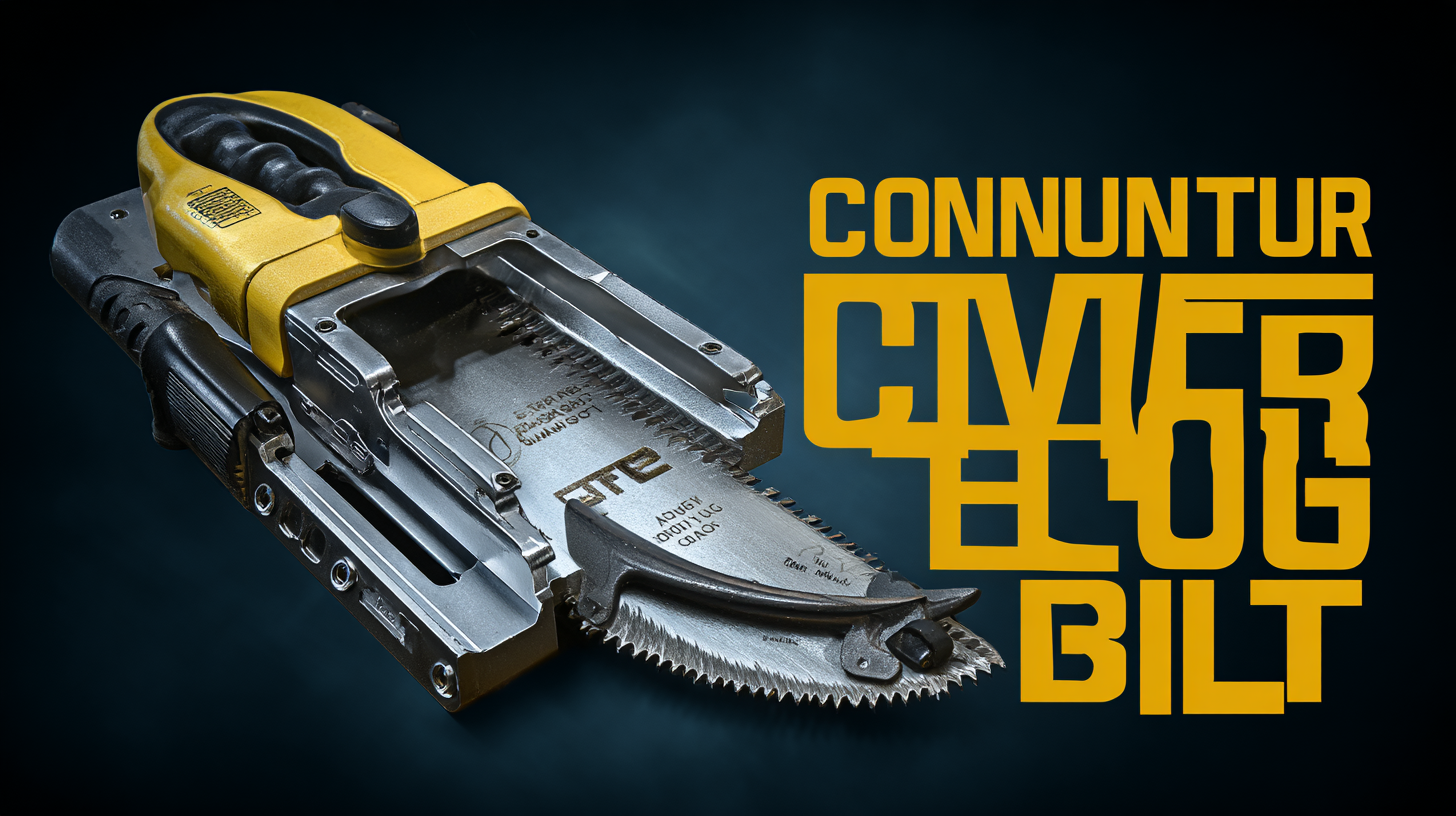In the competitive landscape of material handling and manufacturing, the efficiency of production lines heavily relies on tools such as the Conveyor Belt Cutting Tool. As reported by Industry Research, the global market for conveyor belts is expected to reach $6 billion by 2025, witnessing a compound annual growth rate (CAGR) of 4.5%. This growth underscores the indispensable role that cutting tools play in ensuring optimal belt performance and longevity. The right cutting tool not only enhances precision but also reduces downtime and operational costs, making it a critical investment for industries ranging from mining to logistics. This guide will delve into key features to consider when selecting the best Conveyor Belt Cutting Tool, along with insights into industry standards and practices that are shaping the future of manufacturing. As we explore these aspects, we will highlight the remarkable achievements of top manufacturers, particularly in China, whose global export footprint showcases their innovation and quality in this vital sector.

When it comes to maintaining conveyor systems, selecting the right cutting tool is crucial for efficiency and durability. Understanding the different types of conveyor belt cutting tools available can significantly impact operational productivity. Common options include rotary cutters, hand-held knives, and portable electric saws. According to a report by the Conveyor Equipment Manufacturers Association (CEMA), using the correct cutting tool can reduce downtime by up to 30%, highlighting the importance of making an informed choice.

When selecting a cutting tool, consider factors such as blade material and ergonomics. High-speed steel blades offer a good balance of durability and sharpness, while carbide-tipped blades are ideal for cutting thicker materials. Additionally, ergonomic designs can minimize user fatigue, which is key for tasks requiring high precision and extended use.
Tip: Always assess the specific needs of your operation—such as the thickness and type of conveyor belt—and consult with tool manufacturers for recommendations tailored to your requirements. Furthermore, regular maintenance of cutting tools can extend their lifespan and ensure optimal performance, making it essential to follow manufacturer guidelines.
When selecting a conveyor belt cutting tool, several key features can significantly influence efficiency and performance. One of the most critical aspects is the blade material. According to a 2022 industry report by MarketWatch, tools with high-carbon steel blades offer superior longevity and sharpness retention, decreasing the frequency of blade replacements and resulting in lower long-term costs. Additionally, carbide-tipped blades are gaining popularity for their ability to maintain precision cuts, especially in tough materials, thereby optimizing production workflows.

Another essential feature to consider is ergonomics and ease of use. A study by the Occupational Safety and Health Administration (OSHA) found that tools designed with ergonomic handles reduce the risk of worker fatigue and injuries by up to 30%. Features such as adjustable cutting depths and integrated safety mechanisms are particularly advantageous in high-volume environments, significantly improving both safety and productivity. It’s vital for operators to choose cutting tools that facilitate comfortable operation while maintaining high cut quality, ensuring both efficiency and workplace safety.
When it comes to cutting conveyor belts, understanding the best practices can significantly enhance efficiency and safety in industrial operations. According to a report by the Conveyor Equipment Manufacturers Association (CEMA), improper cutting techniques can lead to a decrease in belt lifespan by up to 30%. This statistic underscores the importance of selecting the right cutting tools that not only ensure precision but also minimize wear and tear on the belts.
Industry experts emphasize the importance of using specialized cutting tools designed for specific belt materials. For example, a study by Machinery Maintenance magazine points out that using a high-quality reciprocating saw can improve cutting accuracy by 20% compared to standard cutting methods. Additionally, the use of diamond-coated blades has proven effective for cutting through thick rubber and reinforced belts, reducing the risk of fraying and subsequent failure. By following these best practices and utilizing recommended tools, businesses can achieve a more sustainable approach to conveyor belt maintenance.
When it comes to choosing a conveyor belt cutting tool, the decision between manual and automated solutions is critical for efficiency and productivity. Manual cutting tools offer a level of flexibility and lower upfront costs, making them suitable for small-scale operations or specific niche applications. However, they heavily rely on skilled labor, which can be a challenge in an era where workforce availability is decreasing. In recent years, advancements in warehouse automation have highlighted the need for solutions that reduce manual intervention and enhance operational efficiency.
On the other hand, automated conveyor belt cutting solutions are gaining traction across various industries, including Agriculture and Medical Device Manufacturing. With the adoption of smart technology, these tools not only improve cutting precision but also enable faster processing times. Innovations such as intelligent conveyors and robotic systems are transforming traditional practices, allowing for greater consistency and reducing manual labor. As organizations seek to streamline their operations amidst workforce challenges, the benefits of automation become increasingly evident, making it a compelling option for those looking to enhance productivity in their cutting processes.
When working with conveyor belt cutting tools, safety should always be a top priority. Operators need to be aware of the potential hazards associated with the cutting process, including sharp blades, flying debris, and the risk of improper handling. It is essential to wear appropriate personal protective equipment (PPE), such as safety goggles, gloves, and cut-resistant clothing, to safeguard against injuries. Additionally, ensuring that the tool is in good working condition and that safety features, such as blade guards, are properly used can significantly reduce the risk of accidents.
Before starting the cutting process, operators should conduct a thorough safety inspection of the work area and the tools being used. Proper training on the operation of conveyor belt cutting tools is crucial, as this knowledge helps to minimize risks and reinforces safe work practices. Establishing a clear set of safety protocols, including emergency shut-off procedures and first-aid measures, can further enhance workplace safety. By prioritizing safety considerations, companies can create a safe environment that protects their employees while maintaining efficient operations.
| Feature | Description | Importance | Safety Considerations |
|---|---|---|---|
| Blade Material | High-carbon steel or carbide for durability | Essential for longevity and cutting efficiency | Ensure blades are sharp to prevent slips |
| Cutting Type | Manual, electric, or hydraulic options available | Choose based on material and volume | Use appropriate protective gear for powered tools |
| Handle Design | Ergonomic handles reduce strain | Improves user comfort and control | Check for stability before use to avoid accidents |
| Safety Features | Blade guards, safety switches, and automatic shutoff | Crucial for preventing injuries | Regularly inspect safety features for functionality |
| Portability | Lightweight and compact designs for easy transport | Increases versatility in various work environments | Secure tools during transport to prevent movement |
